Menstrual cups are considered a sustainable alternative to pads, tampons, and panty liners due to their extremely long lifespan of several years. In this post, we will show you how to properly clean your menstrual cup so that you can use it for a long time.
How often to clean your menstrual cup?
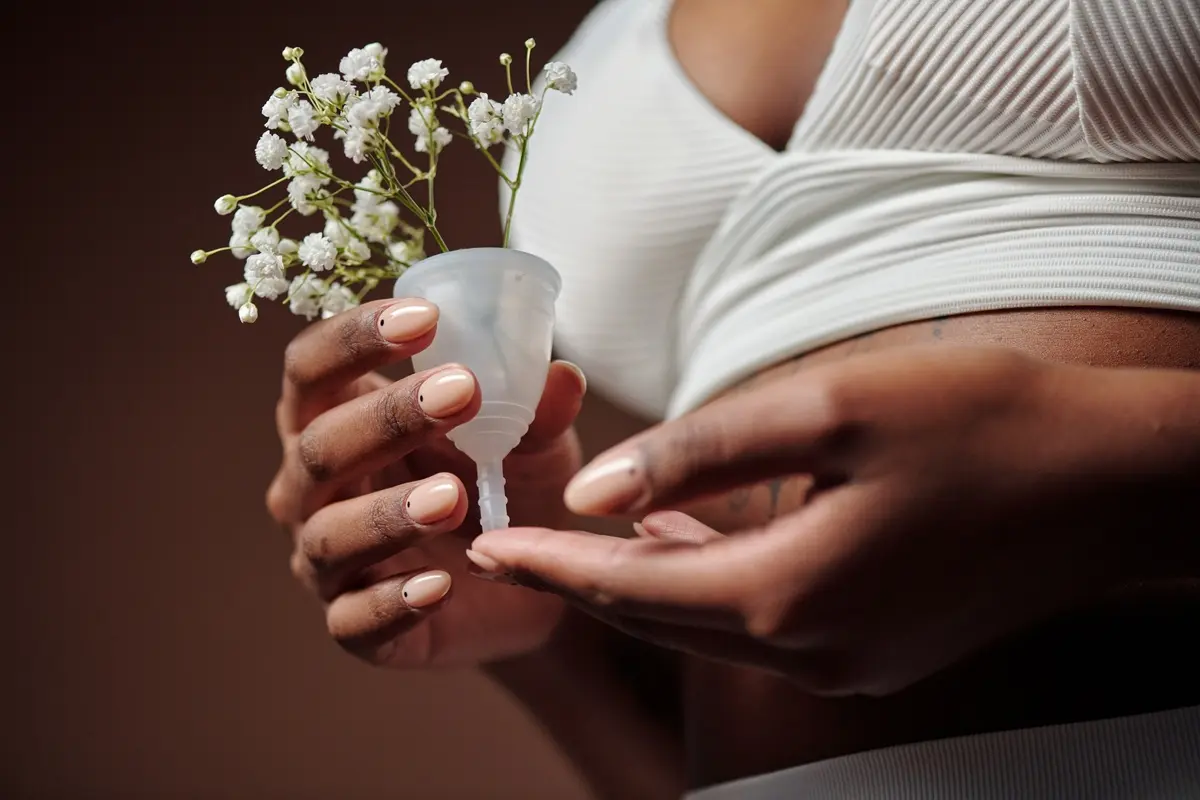
Cleaning a menstrual cup is usually uncomplicated and requires only water for the most part. It is also very environmentally friendly in this regard. For an even better result, however, you can also use small amounts of selected cleaners or home remedies. We’ve summarized which ones are suitable and how you should proceed in different situations.
How to clean menstrual cup before first use
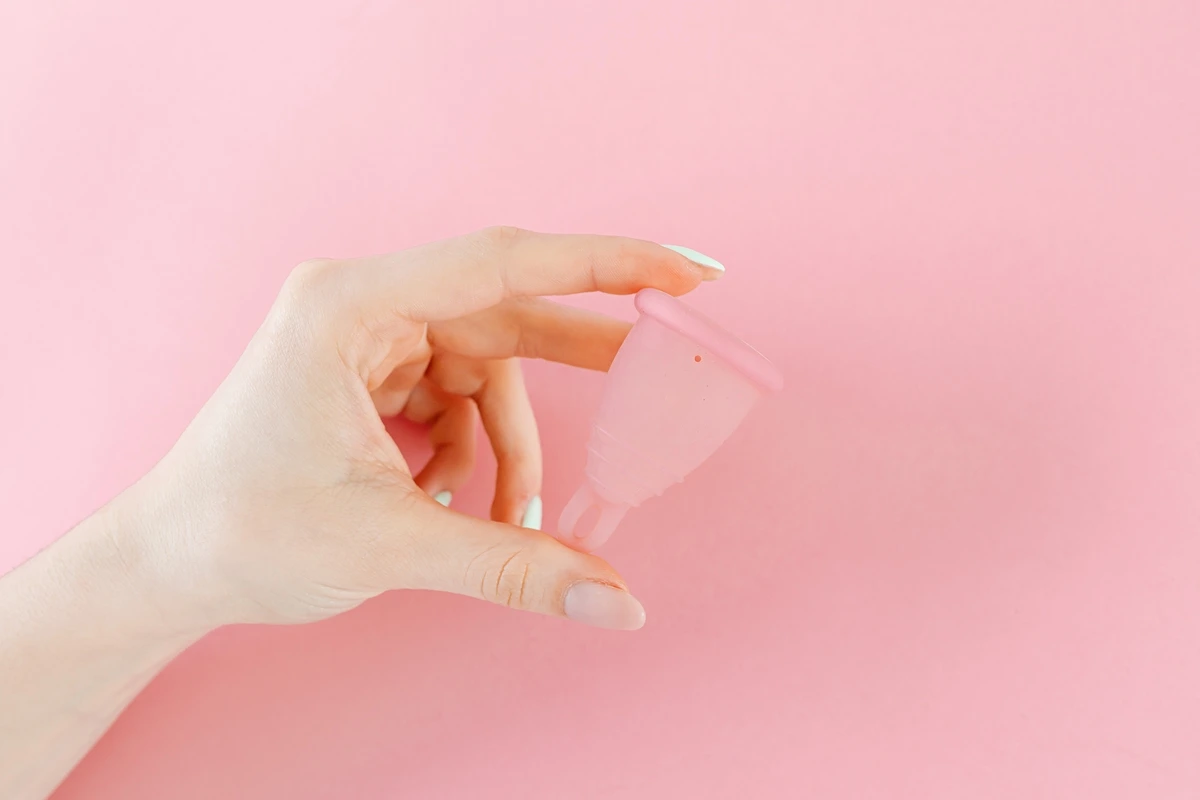
Before you use your new menstrual cup for the first time, you should boil it for deep cleaning to remove any production residues or other impurities. Here is the best way to do this:
- Wash your hands thoroughly.
- Wash the cup with warm water and liquid soap.
- To sterilize the cup, boil it for up to 20 minutes, depending on the manufacturer’s instructions.
- Make sure that the cup is completely submerged in water, but not touching the hot bottom or walls of the pot to avoid damaging the material. To do this, simply place the silicone cup between the spokes of a whisk and then place the whisk in the boiling water.
Daily cleaning during your period
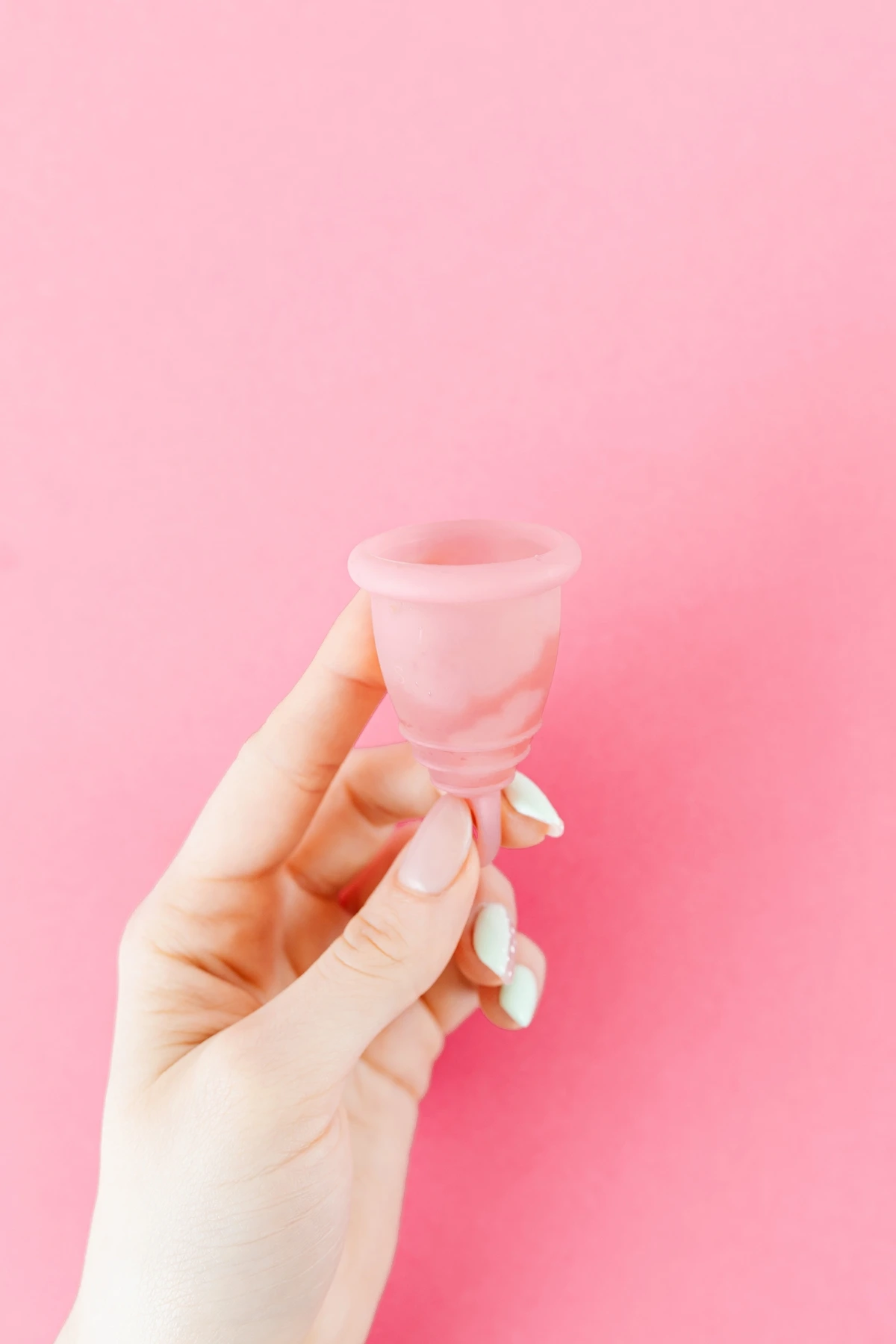
When you have your period and wear the silicone cup accordingly, you should clean it several times a day – ideally after each emptying. In general, this is necessary about three to five times a day, depending on the time of your period and the strength of your menstrual bleeding, which is much less frequently than with tampons and the like. Cleaning should be done with a liquid soap with a mild to acidic pH value (5.5 to 3.5), which corresponds to the natural environment of your vagina. Follow these steps:
- Empty the cup.
- First rinse it with cold water. Then wash it with warm water and liquid soap. Then rinse with plenty of clean water to remove all soap residue.
- Insert the menstrual cap as usual.
- Always make sure to clean your hands well before removing or inserting the cup.
- To avoid allergic reactions and skin irritations and to protect the silicone, the soap used should be oil-free and contain neither perfume nor dyes. Castile soap is a good choice.
From time to time, you can also use a disinfectant spray to kill bacteria and germs. It is recommended to use an agent suitable for silicone, which is also used for erotic toys, for example. However, do not forget to wash the cup well before inserting it again.
How to clean menstrual cups on the go and in public toilets?
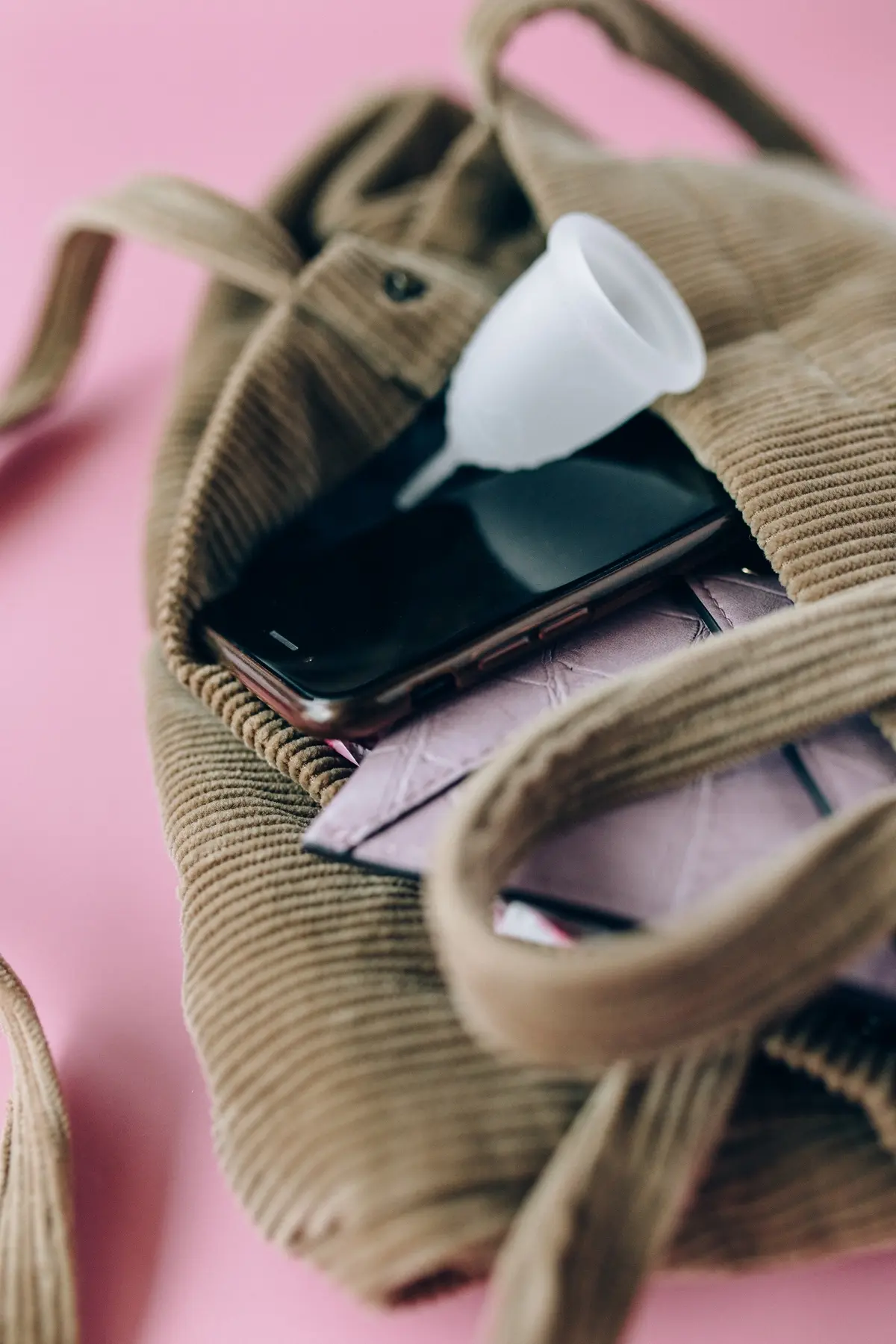
When you’re on the road, you can clean a silicone menstruation cup quite effectively in a variety of scenarios. Special cleaning tablets are recommended for use in hotels, campgrounds, and other locations where there is no access to boiling water. Cold water is used to dissolve these. A sip of water from a drinking bottle is sufficient for rinsing in public toilets. You can also use cleaning wipes that have been specially developed for menstrual cups. If in doubt, you can just empty the cup and then reinsert it.
Cleaning at the end of your period
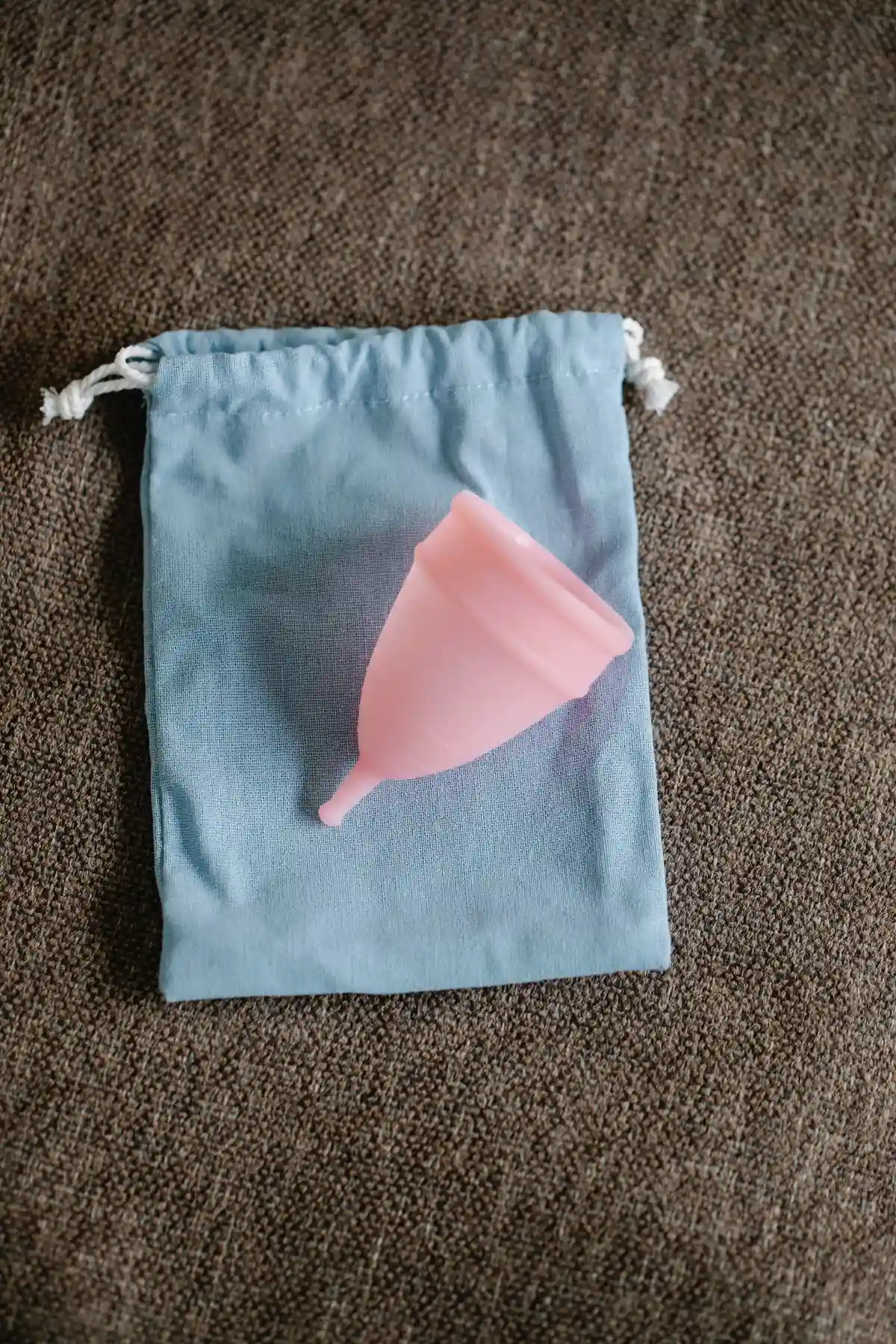
Before you put your silicone menstrual cup in a cloth bag or other container after your period is over, you should disinfect it.
To do this, you can boil the cup according to the time specified by the manufacturer or wipe it with rubbing alcohol to kill bacteria and germs. This way you avoid discoloration, odor and make sure you always use a hygienic cup before the next use.
Can I clean the menstrual cup in the microwave?
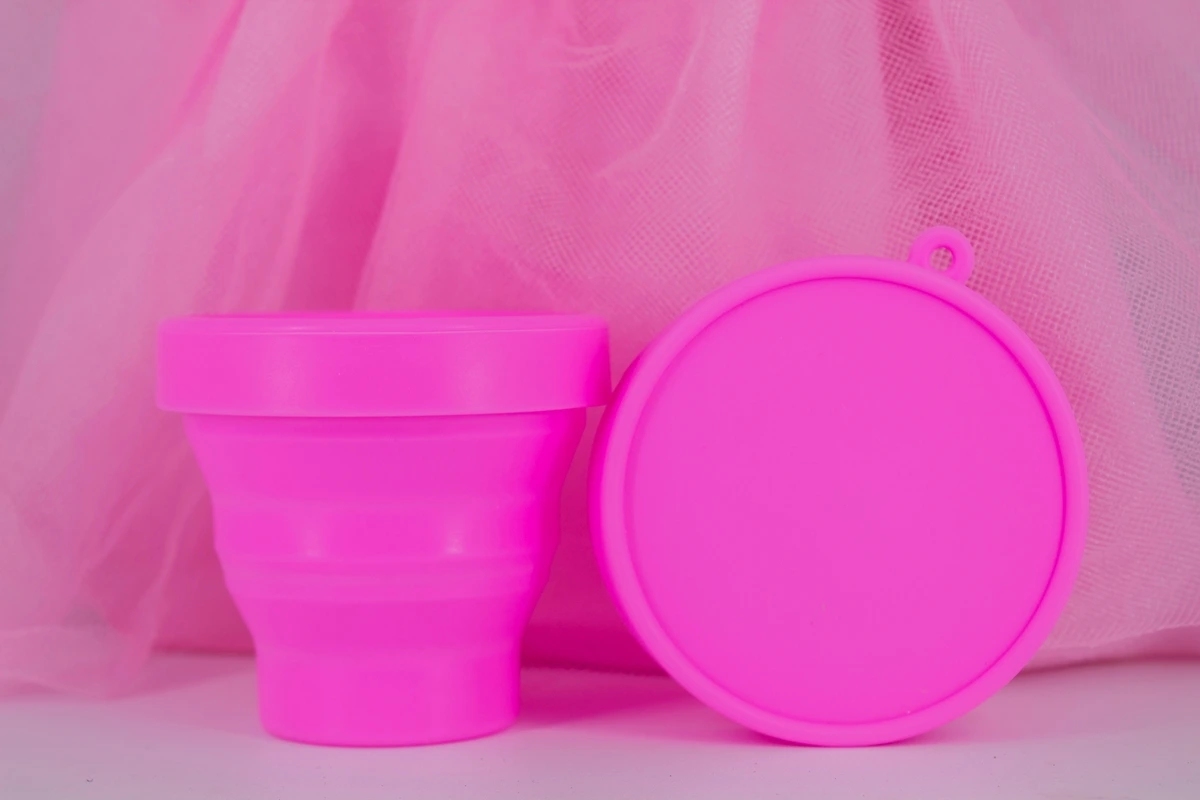
The only alternative to boiling the menstrual cup in a pot is sterilization in the microwave:
- Place the menstrual cup in a microwave-safe container and cover it completely with water.
- Set at 500 to 800 watts for at least 5 minutes.
- From 850 watts, 3 minutes is sufficient.
Important: The water must also boil when cleaning the menstrual cup in the microwave. If this is not the case, the period cup will not become sterile either! Some brands offer special sterilization cups. So you can clean your menstrual cup comfortably directly in the microwave.
Cleaning the menstrual cup after a yeast infection
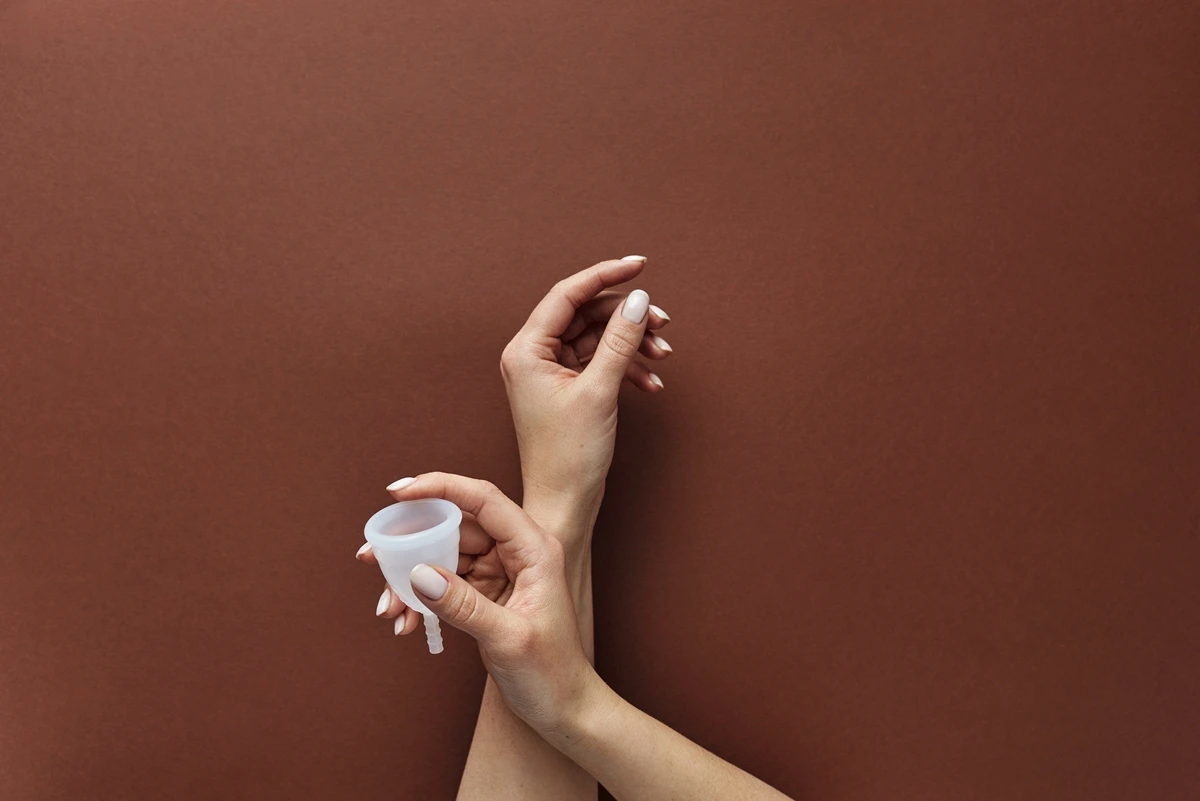
If you are currently suffering from a fungal infection or had one during your last period, there are a few things to keep in mind. Do not use a period cup if you …
… are not supposed to use tampons according to the package insert of the medication used to treat the fungus.
… use a gel or cream containing silicone for treatment.
… you are in pain.
In these situations, it is better to use cloth pads or period underwear.
If you have worn the menstrual cup with an infection that has not yet been noticed, then intensive cleaning is required, which is why you should boil the cup several times.
- Boil for 3 x 20 minutes.
- After each boiling, let the menstrual cup dry well.
- Use fresh water for each boiling.
Special cleaning tips
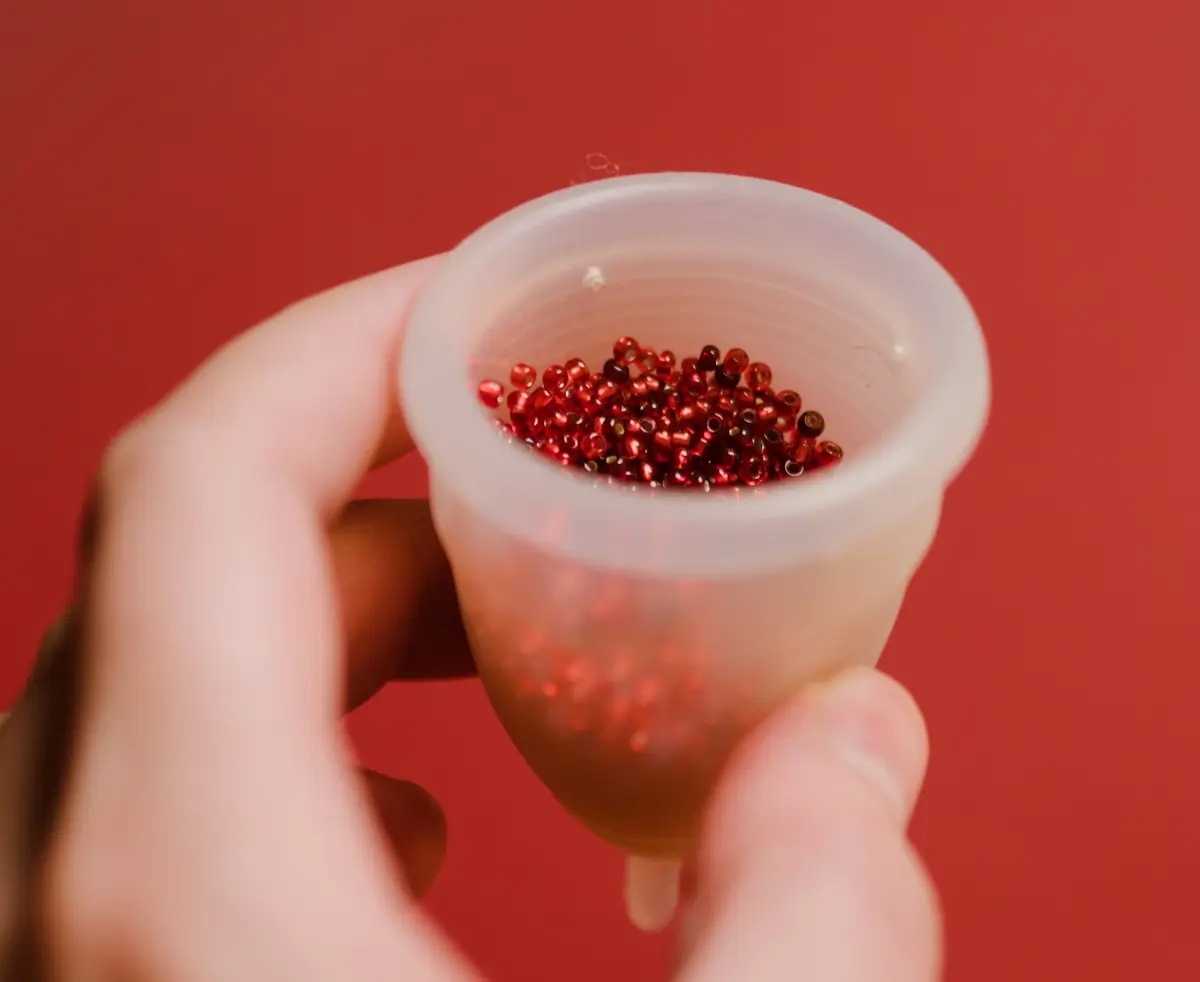
In addition to basic cleaning before and after each use, intensive cleaning steps should also be performed as needed. In the following, you will learn how to remove discolorations as well as unpleasant odors and how to clean the air holes in menstrual cups.
Removing discoloration and stains
Over time, the material of menstrual cups can become discolored due to contact with blood. To get rid of color changes, there are several ways:
- Boil your menstrual cup as usual, but add a teaspoon of baking soda to the boiling water. For stubborn stains, you can also make a paste from a teaspoon of baking soda powder and a few drops of water. Turn the cup upside down (inside out) and clean the stain with the paste and a toothbrush.
- Use special cleaner against discoloration on menstrual cups. Use it according to the manufacturer’s instructions.
- Soak the cup in lemon juice, white vinegar or a 3 % hydrogen peroxide solution for an hour.
- Then clean it well with clean water and also boil it. You should wear gloves, protect your eyes and also pay attention to material compatibility.
To avoid staining from the start, always rinse your menstrual cup with cold water first, followed by warm water, as you would when cleaning blood stains from clothing.
Removing odors
If your menstrual cap has acquired a foul odor, this may be unpleasant, but has no effect on its further use. Odors should usually disappear following disinfection or boiling. If this is not the case, continue as follows:
- Soak the cup in hydrogen peroxide or rubbing alcohol for about an hour. Lemon juice is recommended as a sustainable alternative.
- Then rinse the material very well under running water. You should also boil the cup to remove all residues.
Tip: Always make sure that the selected agent does not harm the material of your menstrual cap. You should also wear gloves and protect your eyes.
Cleaning air holes
The air holes of menstrual cups also need to be cleaned regularly, as they are an ideal breeding ground for germs and bacteria. Fill the cup with warm water and squeeze the opening of the cup at the bead with two fingers. Then apply gentle pressure to the sides with the other hand so that the water is forced through the air holes.
For deep cleaning, careful brushing with a toothbrush purchased specifically for this purpose is recommended. However, cleaning the air holes is even better with an interdental brush or a toothpick that has been previously soaked in rubbing alcohol.
When cleaning the air holes, you should proceed carefully and, above all, not use any pointed or sharp-edged objects. Otherwise, you risk damaging the silicone.
Don’ts: Cleaning in the dishwasher is not enough!
Dishwasher: There are two reasons why you should not clean a menstruation cup in the dishwasher. First, the temperature is too low to ensure that any bacteria are removed. Second, not all menstrual cups are dishwasher safe. There is also a risk that residue from the dishwasher detergent will build up and enter the vagina.
Washing machine: The same applies to cleaning in the washing machine as to cleaning in the dishwasher – the temperature is too low, the material can be damaged and detergent could remain on the menstrual cup.
